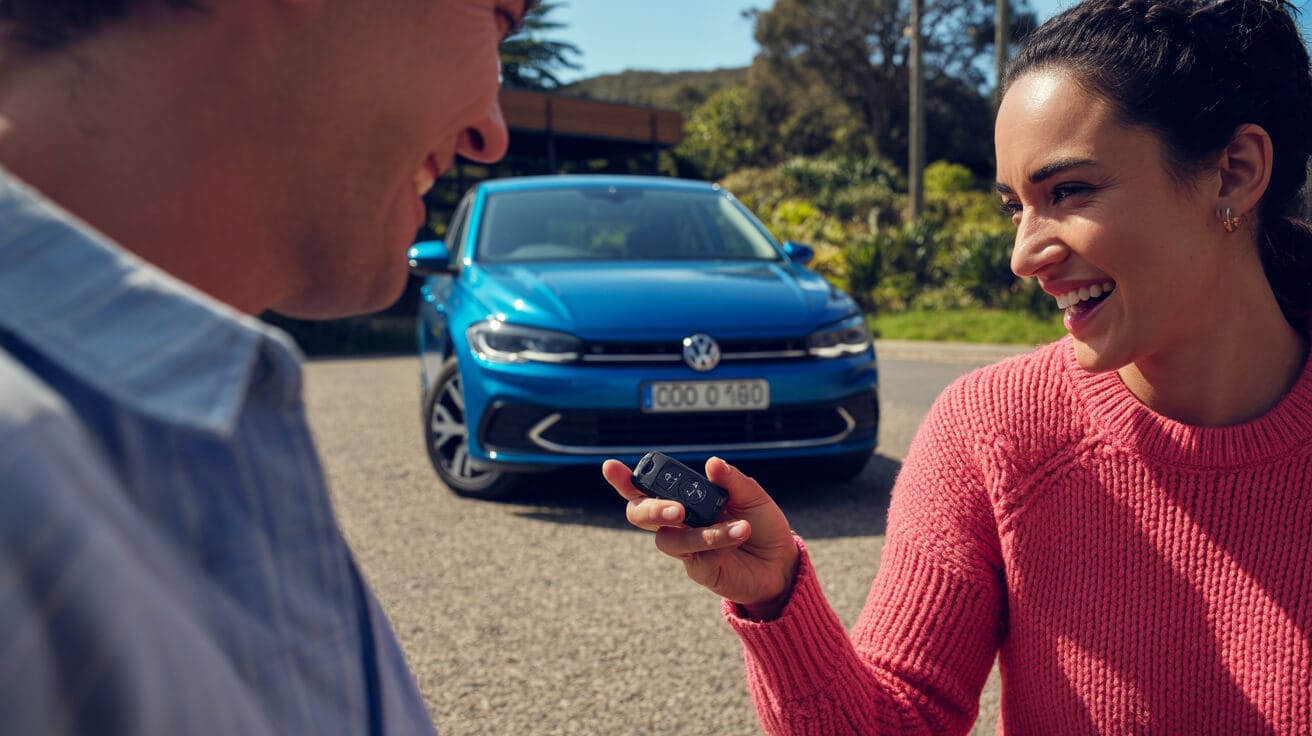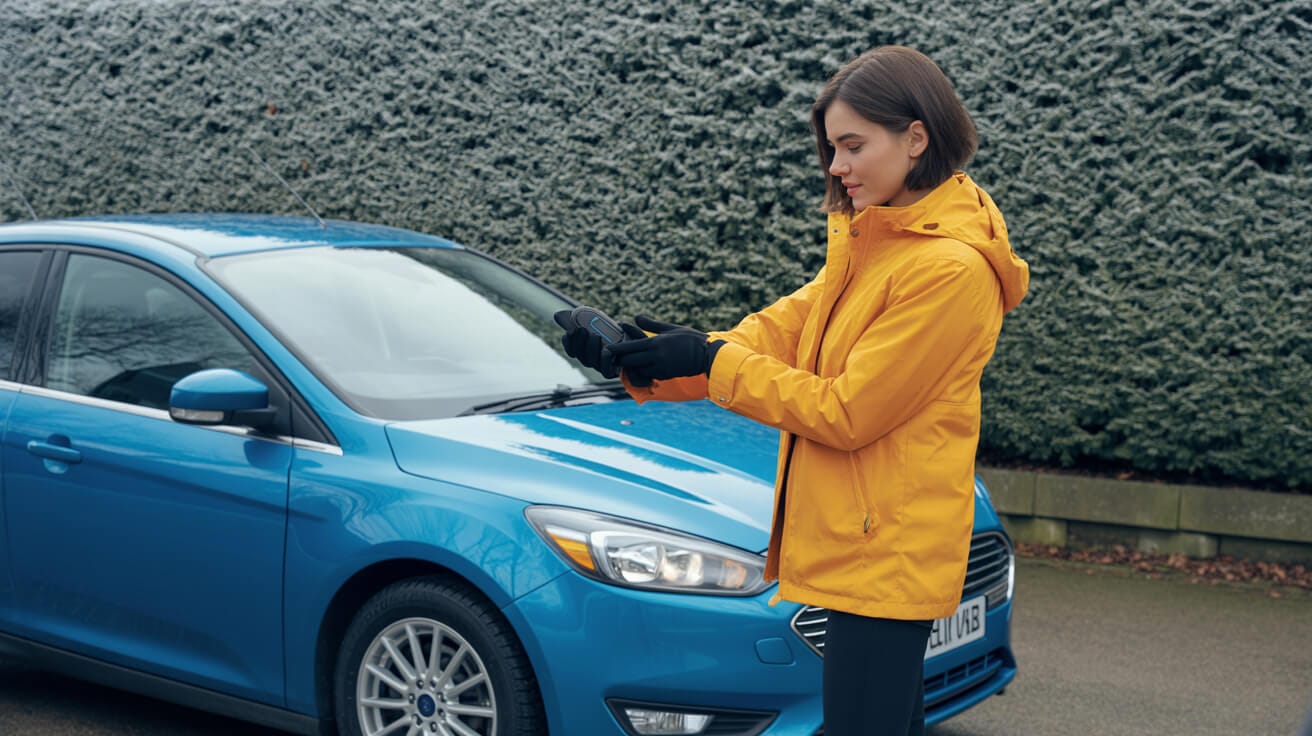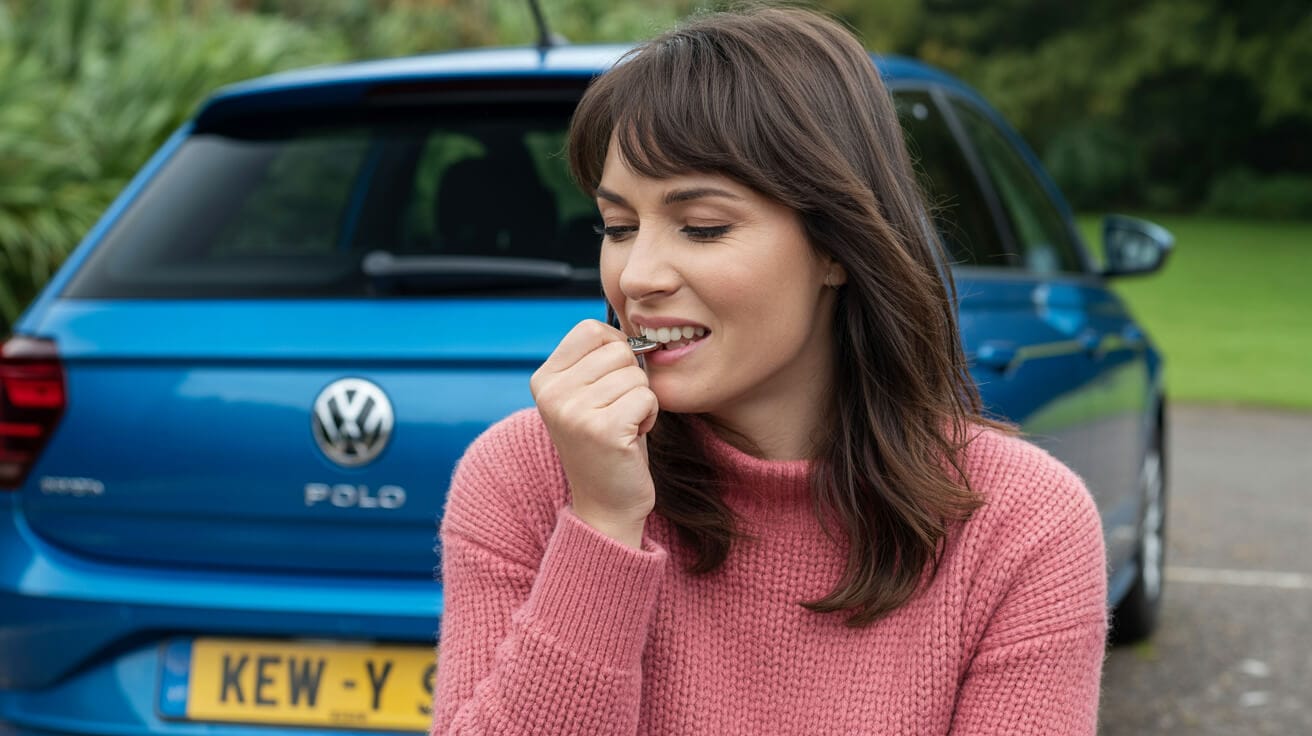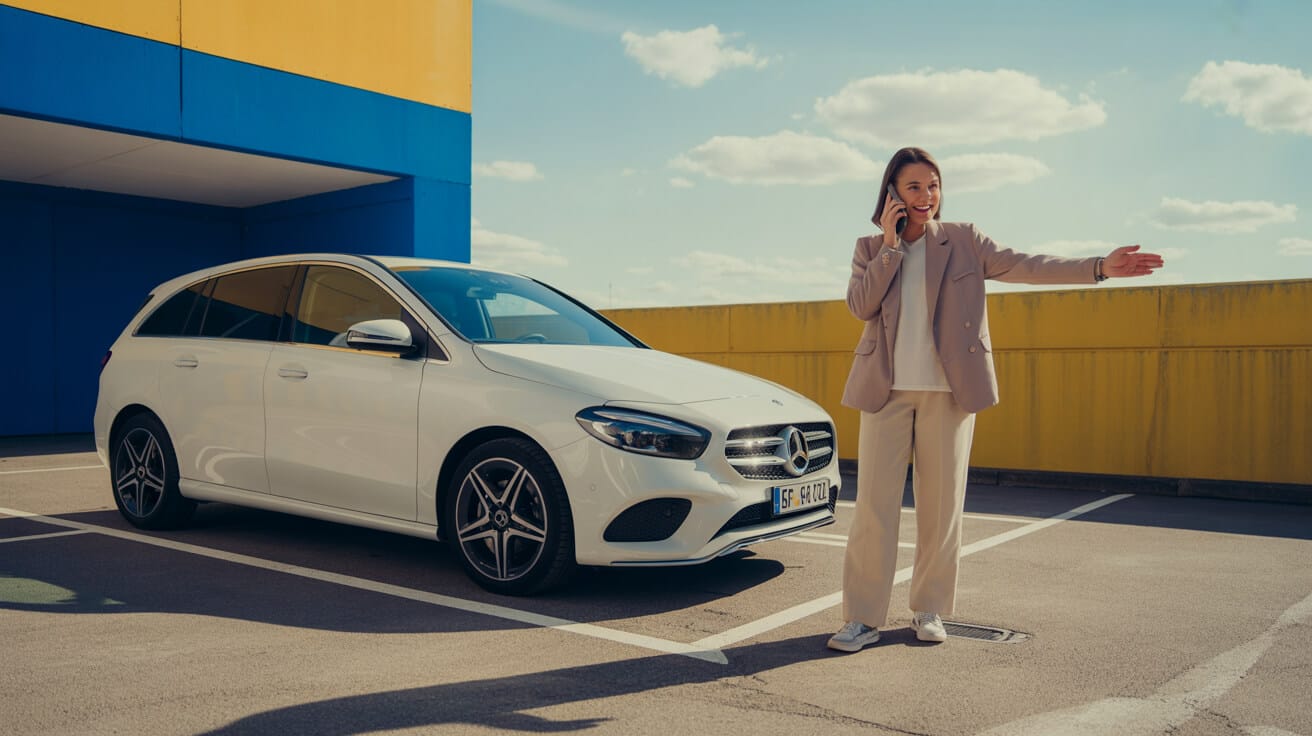1. Is There a Best Access Method for UK Tesla Owners Right Now?
For UK Tesla owners, blending physical and digital access—key card, phone, and fob—is the smart move for worry-free driving, insurance compliance, and smooth daily life. Choosing your mix isn’t just about convenience; it’s a safety net covering emergencies, insurer demands, and those days when technology throws a curveball.
Relying solely on a key card or digital method leaves you exposed. UK insurers—and Tesla’s own guides—expect you to have more than one working access tool. The key fob, while optional and at a premium, is prized for weatherproof reliability and glove-friendly unlocking. The phone app makes the car an extension of your pocket, full of features, but is never bulletproof: phone dead, app glitches, or signal drop can leave you stranded. The seasoned move is combining your key card with phone-as-key, or carrying the fob as backup. Document which methods are live and current. It’s the difference between breezing through a cold morning and wrestling with a support call in the pouring rain.
| Choosing your mix of Tesla keys gives daily peace of mind and ensures you’re ready if trouble hits. |
| Access Method | Strengths | Limiting Factors |
|---|---|---|
| Key Card | Reliable, battery-free, always accepted | Fiddly in rain, must be tapped |
| Phone-as-Key | Hands-free, remote features, no extra kit | Dependent on your phone, app, battery |
| Key Fob | Quick-click, glove-safe, works in weather | Needs battery, costs extra, setup |
Redundancy is real protection. However advanced your Tesla, UK rules—and many insurers—still expect a physical backup.
Why does your access method choice matter?
Because it prepares you for breakdowns, boosts your claim eligibility, and keeps you moving even when tech fails.
Is there one “best” method for everyone?
No. The sharpest UK owners stack two or more access types—card plus phone, or fob and card—so lockouts and insurance headaches are someone else’s problem, not yours.
2. How Each Access Method Works—and Why the Technical Details Matter

Key card, key fob, and app all open Teslas differently—and those details determine how insurance claims, ownership transfers, or emergencies play out in the UK. Understanding how each works keeps you ahead of surprises.
The key card uses NFC (Near Field Communication)—you tap it to the car’s B-pillar to unlock or start. Simple, battery-free, but always manual. The key fob sends encrypted radio signals with rolling codes—press once and you’re in, gloves or rain don’t get in the way. It uses both UHF (radio) and LF (low frequency) channels for robust coverage. The phone app upgrades your mobile into a “passive” BLE (Bluetooth Low Energy) key. You walk up, unlock, and start hands-free, with remote features just a tap away. But it depends on your phone’s health, permissions, and network connection.
| Managing access credentials is both a legal and insurance issue—not just a technical decision. |
Visually, imagine these: a card pressed to the B-pillar, a glove-hand pressing a fob, your phone unlocking the car as you walk up. Three access flows, three risk profiles.
When adding, removing, or transferring access—selling, leasing, or sharing—you must track every update. Failing to log, clear, or double-check those devices causes denied claims or confusion at resale. For business, this is compliance 101; for private owners, it’s peace of mind and hassle-free disputes.
Why manage your credentials carefully?
Because old or lost credentials can void claims or slow down support. Logging every update keeps you protected.
What’s the best practice for transfer, sale, or device loss?
Always clear unused credentials before you sell or hand over. Note the dates, devices, and any authorisations; store securely. You’ll save hours if things go sideways.
3. Reliability: Which Access Method Survives the Tough UK Climate?

Rain, frozen fingers, or battery hiccups—each Tesla key method faces a different test in UK weather. The fob stands out when storms or frost hit: just push to unlock, every time. No touchscreens, no fiddling, no waiting for Bluetooth or apps. Cards withstand the weather but can be tricky in the rain or with gloves. Phone access is effortless on a sunny day but the weakest link if your mobile is dead, flat, or glitchy.
Your access method shouldn’t be an experiment. Choose a backup that’s proven under real-world UK abuse.
| Situation | Fob | Card | Phone-As-Key |
|---|---|---|---|
| Rain, Gloves | The winner | Tricky | Prone to fail |
| Early Morning, Frost | Reliable | Usable | Battery risk |
| Phone Dead | Works | Works | Locked out |
Testing in real life proves what manuals don’t mention. Many owners only discover weak links the hard way. UK Tesla drivers who bank everything on a single method often end up stranded—especially in winter, at the supermarket, or after a phone mishap.
What owner habits deliver smooth, worry-free access?
- Carry both card and fob; don’t trust only one.
- Check every method on the first of each month.
- Replace fob batteries regularly (and store a spare).
- Test the app after phone or account changes.
Can you get away with just a card or just your phone?
Not if you want zero-stress travel. In the UK’s wild weather, redundancy is how you avoid those “how did I get locked out” moments.
4. Security Risks: Protecting Your Car and Your Claims

Gadgets can be clever, but your routines and records make security real—not just tech. The fob’s encrypted signals mean would-be thieves have a challenge, but leaving it near your front door or out of a signal-proof pouch invites relay attacks. Cards rarely get cloned, but if you lose one, revoke its access at once. Relying on your phone is fine, but risks rise if you use weak passwords, skip multi-factor authentication, or don’t update compromised devices. Lost or overlooked devices allow silent access and can void claims.
Real protection hinges on your habits as much as your hardware.
- Store all fobs in a Faraday pouch, not in view of the street.
- Instantly revoke all lost, sold, or shared credentials—card, fob, or app.
- Log every change, especially for fleets or shared vehicles.
- Set up strong passwords and enable two-factor authentication on your Tesla account.
Modern Teslas alert you when someone adds or removes a key, but human error is the common risk: forgotten access, missed revocation, slack logging.
How strong is Tesla’s key security in the UK context?
No access method is perfect, but combining strong routines—safe storage, immediate revocation, and up-to-date logs—provides claim-proof, real-world security.
Why does your claim depend on your habits?
Insurers expect an up-to-date log of all active credentials. If your records are incomplete, they can contest or deny your claim, even when your car’s tech is state-of-the-art.
5. What to Do When Locked Out: UK Tesla Recovery Done Right

Lockouts are stressful, but the right steps protect your car, keep claims valid, and safeguard your insurance. Safety is always first—move yourself away from road hazards. Next, try every access route: fob, card, and app (in that order). Many times, one backup method saves the day.
If you remain locked out, only then should you call Tesla support or a UK-accredited auto locksmith like Autolocks Ltd. Have your ID and proof of ownership ready. Never resort to forced entry—UK Tesla doors and control modules are complex, sensitive, and expensive to repair or replace if mishandled. Forced attempts will often void warranties and damage insurance standing.
| Even in emergencies, calm process beats panic—document deeply, act deliberately. |
Lockout Recovery Checklist
- Work through fob → card → app.
- If no success, contact Tesla support or Autolocks Ltd, prepared with ID and documentation.
- Keep a written log of failed/attempted methods and whom you contacted.
- Do not use physical force—preserve locks and electronics for smooth recovery and clean record-keeping.
Why trust professional help for Tesla lockouts?
Teams like Autolocks Ltd have the tools, compliance know-how, and traceable documentation accepted by insurers—avoiding expensive mistakes and headaches.
Can a UK Tesla owner fully recover solo from any lockout?
DIY can work with backup credentials, but if those fail, professional recovery is faster, keeps records intact, and saves you costly repairs or disputed claims.
6. Governance, Records, and Privacy: Why UK Registration and Logs Matter

GDPR-compliant logs aren’t bureaucracy—they’re your insurance and resale shield for your Tesla. Each addition, loss, or handover of a key, fob, or app needs a signed, timestamped record. For fleets and company drivers, this practice is legally essential; for individuals, it prevents chaos at resale, after theft, or during an insurance claim.
| Every change you log adds security, convenience, and leverage. |
| Event | What Should Be Logged | Value to You |
|---|---|---|
| Add New Key/Fob | Date, device, authoriser | Claims and warranty clarity |
| Remove Lost Device | Date, confirmation, removed status | Proof for claims/disputes |
| Change App User | Device/user details, update date | GDPR compliance; access visibility |
| Sell/Lease Handover | Sign-off, clearance of all devices | Transfer and liability clean break |
Storing these logs securely protects your claim eligibility and privacy, and speeds up every future change or dispute.
Why does GDPR compliance matter for Tesla access in the UK?
It gives you ironclad proof of who had access, protecting your interests in any claim or future handover.
How do records make every process smoother and safer?
Audit trails resolve who did what, when, and with which device. You avoid disputes, speed up claims, and ensure that only trusted hands control your car.
7. Hard-Won Owner Lessons: Real Problems, Smart Solutions

UK Tesla owners who skip backup credentials, forget to update, or DIY without support pay the price. Take the driver in Glasgow: depended on the phone app, got caught in a storm, phone died, no card or fob—stuck outside until help came. The Birmingham owner who tried programming new cards solo after losing one—wiped their own access, needed a service visit and days without the car.
| Picture baton handoff in a relay: one dropped step creates chaos, the right routine brings a win. |
Five Smart Habits of Savvy UK Tesla Owners
- Always keep a backup—fob or card—within quick reach.
- Update all credentials after phone or device changes.
- Log new and removed keys in a secure, easy-to-find spot.
- Use professionals like Autolocks Ltd for tricky tasks or major handovers.
- Routinely check all access methods, so glitches don’t catch you out.
What causes repeated headaches for UK owners?
Shortcuts, skipping proper checks, and amateur fixes create expensive, time-consuming disasters. Good logs and backup keys are your best defence.
How do smart routines turn emergencies into routine victories?
Using backups, logging changes, and asking for expert help when needed eliminate surprises and keep you calm, even when tech lets you down.
8. Choose Autolocks Ltd for Compliant, Reliable Tesla Support in the UK

Autolocks Ltd protects UK Tesla owners with emergency recovery, precision key/fob service, digital onboarding, and fully GDPR-compliant documentation—as standard. When you need legal peace of mind, fair pricing, or rapid access to trained help, our UK-wide team is here.
- Certified, audit-trailed service: Expect logs, photos, and signatures with every job.
- Rapid response: Fast dispatch and skilled hands prevent downtime and drama.
- Insurer and warranty alignment: Our protocols keep your cover valid and your rights intact.
- Privacy-first approach: Your records are safe, your access remains under your control.
Whether you’re adding a new fob, need urgent recovery, or want a seamless, worry-free digital handover, Autolocks Ltd proceeds with the strict protocols UK law and Tesla demand. You get gold-standard access management, real protection against downtime, and a smooth path for claims and handovers.
Choose Autolocks Ltd when secure Tesla access, insurer-ready paperwork, and transparent recovery matter. If you value expert, trustworthy support, we’re ready to help you protect your Tesla and your peace of mind.
Frequently Asked Questions
How does each Tesla access method—card, fob, or app—shape your security and risk as a UK owner?
No two Tesla credentials protect you in the same way. The slim key card sits in your wallet and waits for its moment when Bluetooth fails or the fob battery falls flat. The fob feels like classic convenience—a press or presence unlocks the doors with one hand—but its entire world runs off a coin cell. The app feels futureproof until your phone dies, loses permission, or can’t get signal in an urgent moment. Every UK owner who bets on just one of these finds out fast why redundancy matters: from roadside lockouts to claim denials, the gaps appear when you least expect. Insurers now scrutinise which access path was used at the point of theft or breakdown; warranty teams require proof of proper credential management; future buyers demand logs, not stories.
Real protection is invisible: it’s the backup you planned before chaos arrives.
Savvy owners flip the odds—they keep a backup card safely tucked away, fob battery replaced every six months, and app paired but tested after every Tesla or phone update. Every handover, addition, or removal is logged: names, times, tools. That’s how you avoid disputes, accelerate support, and protect your car’s resale. Ownership confidence grows when you’re ready with every route in—and ready to prove it.
What quick moves make the biggest difference?
- Test every access method monthly, especially after updates or battery swaps.
- Check who else has access—clear “guest” or old device slots right after a sale, hire, or transfer.
- Keep your evidence pack: logs, photos, and receipts for every access change.
What technical pitfalls and practical limits matter with Tesla cards, fobs, and apps in the UK?
Each access tool runs a different play: the card uses NFC, unmatched for reliability but fussy in winter gloves or when tapping on a wet pillar. Fobs send EU433 MHz radio and low-frequency signals, working like magic until interference or a low battery kills the routine. The app is built for flexibility—unlocking from your phone, prepping the cabin on a frosty morning—but all that power rides on permissions, updates, and sometimes, a flaky Android or iOS build. UK owners face extra risk: frost cuts NFC speed, heavy rain kills radio clarity, and even fresh fobs can misbehave if software or pairing lags. Technical weak points appear in the moments you’re least equipped to repair them—when you’re hurried, when the car’s been idle, or after a big update.
Tech promises the moon, but British drizzle exposes every shortcut you never meant to take.
Transferring ownership? Skip a reset or leave a lost card paired, and you risk sale delays, claims headaches, or full-on support voids. Only thoroughness brings certainty: test every new access mode, remove every old credential, document each change as if an insurer or auditor might ask tomorrow.
What’s non-negotiable for reliability?
- Card: must be physically intact, paired to your VIN, and checked for taps before big trips.
- Fob: battery checked, firmware current, and pairing reviewed after module replacements or updates.
- App: permissions reviewed after every OS update and device switch—never set and forget.
How do ownership routines and UK life stress-test every Tesla access—who wins in a jam?
Rain, winter darkness, loaded arms, a phone on 10%—UK life campaigns against your access plan daily. Cards “survive” the worst but don’t love moisture or worn-out edges; fobs are heroes until the battery drops at midnight or after a cold snap. Apps put the car in your pocket, but only until the phone dies or the Tesla “forgets” a pairing after a generic security update. Lockouts spike after software pushes, cold snaps, and sales with missing paperwork. Insurance and service logs from 2023–24 confirm: failures nearly always map to single-method reliance or expired access untouched for months.
Habit, not hope, keeps you moving: routine backup is cheaper than any emergency.
The savviest drivers rotate habits: keep the card pristine and paired, swap fob batteries every 6 months, and periodically log into the Tesla account to prune and verify every device. The cost is a few minutes and pennies. The protection? Priceless—zero lockouts, rapid support, full resale value preserved.
Are any methods truly “bulletproof”?
No—every tool can fail if left untested or unmaintained. What works is keeping all paths open and audited, so when life happens, you’re not negotiating with the car in the rain.
What new threats—and emerging habits—should UK Tesla owners be adopting for security and compliance?
Headlines love dramatic relay-theft stories, but your greatest risk is credential confusion, not hackers on the hunt. A phone tossed into recycling without wiping credentials, a fob left alive for an ex-employee, a card carelessly deleted, or an app without a PIN—these human failures, not supervillains, end the audit trail. Thieves adapt as fast as firmware, but insurers and police increasingly look for your diligence, not just the crime method. Tesla pushes patches for signs of relay or spoof attacks, but support and payouts go straight to those with logs, updated credentials, and real-life routines in place.
Security is as much a checklist as a chip: trust is built when every user, device, and event can be named.
UK Tesla owners who verify access after every personnel or driver shift, who delete “ghost” credentials immediately, and who press support for formal logs after any addition or deletion never get caught on the back foot by claim denials or compliance audits. It’s less about locking out hackers and more about not tripping yourself up.
What routines harden your position?
- Check and rotate all access details after a sale, hire, device swap, or update.
- Delete guest accesses proactively—don’t wait for turnover or a problem.
- Export and store every action as audit-proof records—linked to your VIN and timestamped.
If you lose access, need urgent recovery, or must change credentials—what steps protect your pocket and peace of mind?
Panic is the real enemy in a lockout. Pause, check if old cards or backup devices still pair, then gather your ID, proof of ownership, and capture the full storey (what failed, when, after what event). Tesla replacements run £80–£250 and can take days; using random “key shops” risks traceability—insurance and main dealer support often fail right there. Autolocks Ltd delivers UK-authorised response: same-day access, van-stocked cards/fobs, warranty-aligned programming, all changes logged to the VIN, with audit pack ready for service, claim, or resale validation.
Every quick fix carries a future price; every certified intervention pays you back in speed, value, and stress-free support.
Never trust a vendor who skips the paperwork or cannot issue a compliance log. Each recovery must produce receipts, proof of work, photos, and tool IDs. That discipline doesn’t just get you back on the road; it futureproofs your resale, insurance, and aftercare.
Checklist for safe, futureproof recovery:
- Full credential lifecycle report: what happened, who fixed it, how, when.
- Transparent pricing—no hidden charges or withheld logs.
- Exportable documents for dealer, insurer, or future buyer—no storey gaps.
What audit, handover, and privacy rules will UK Tesla owners and fleets be measured by from now on?
No audit trail means no certainty: without logs, credential proof, and formal handover, you own a question mark—not a car. GDPR says your digital handoff must not share residual access or expose previous owner data. Insurers expect immediate audit exports and may refuse claims if devices or key cards appear uncontrolled. Fleets, leaseholders, and private owners all face rising bar: review, rotate, and delete credentials quarterly; encrypt logs; and practice “trust by evidence”—every action is ready to defend future value, warranty, and claim.
Autolocks Ltd solves this discipline problem by automating each step: logs encrypted and accessible, changes verified, and every key or credential change tied to a clear chain of custody. That’s not paperwork—it’s frictionless resale, rapid support, and risk locked out of the equation.
Audit-proofing isn’t extra—it’s the new form of ownership pride.
Every handover, service, or addition leaves a digital paper trail. Fast action is as easy as exporting logs or running a compliance check the moment you need a claim or want to prove proper ownership. True value is in never having to explain: the evidence is automatic, and the only regret is not having done it sooner.
Make audit support effortless:
- After every service or job, review and export access logs—keep them encrypted, backed up, and easy to retrieve.
- Link every change to an owner or VIN, never a generic note.
- Move your aftercare out of the glovebox—make it part of your ownership confidence.







